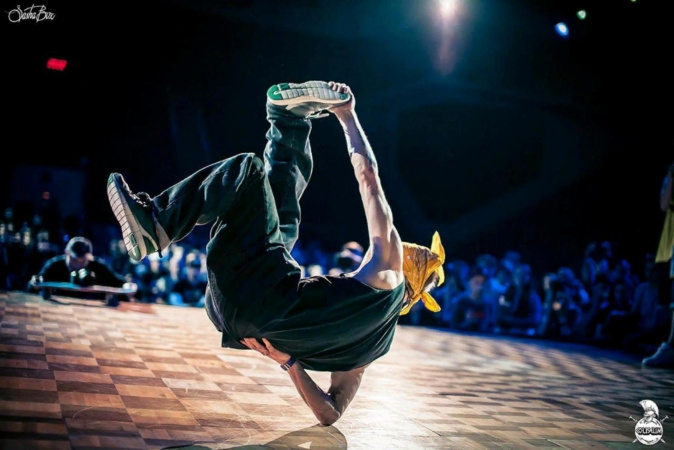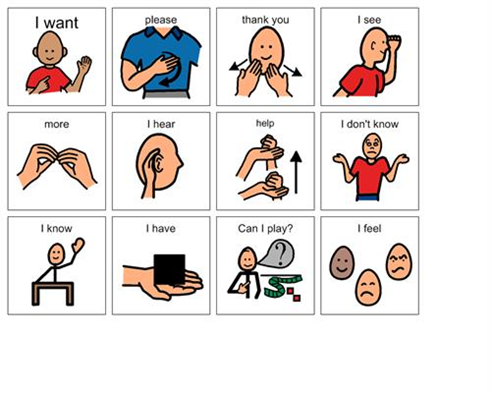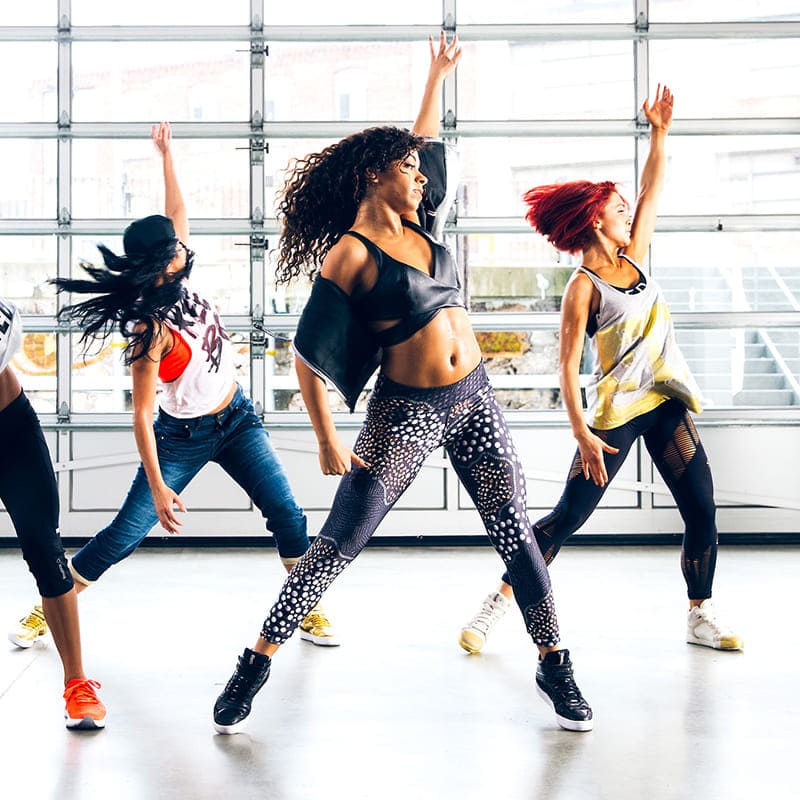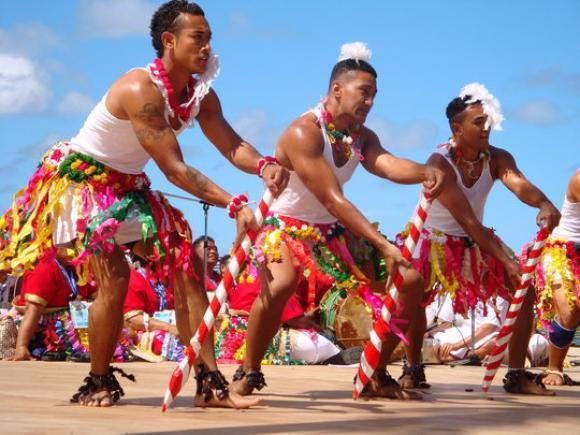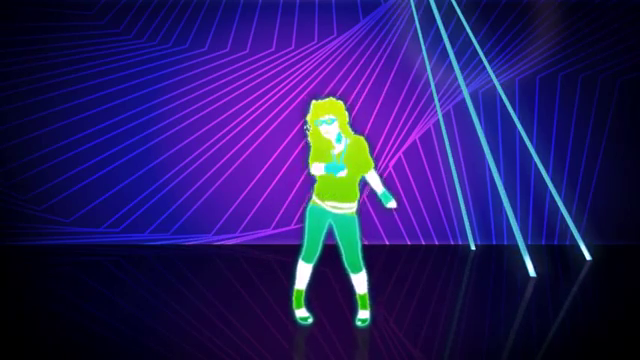Reggaeton how to dance
How to Do Easy Reggaeton Partner Moves
Learn how to do easy reggaeton partner moves with this Howcast Latin dance video.
Transcript
Henri:Hi, guys. It's Henri and Ashlé. We're going to show you our last video of the reggaeton series; it's partner work in reggaeton. So, we will demonstrate for you these two different moves, and then we're going to break it down for you.
So, it goes like this, in closed position, it goes one, two, three, and four, and five, six, seven, and eight. One more time. And one, two, three, and four, five, six, seven, and eight.
And the second move is, from the back. You go back, forward and around. And back, forward, around. Good?
Ashlé:Great. Let's break that down, to make it not scary and awkward. In the beginning of our series, we showed you the basic step, basic movement, and lower body isolation. So, that's what we're incorporating here. Basically, you're just going find each other. Grab the girl. Now, don't make it too awkward. If you're right in front of each other, you're not going to be able to move. Right? That's not the step.
Henri:You have to stand close to each other. It's mostly about connection with the right side of your body, to the right side of her body. In this case, because reggaeton is a laid-back dance, then you are connected more on the hip. So, you're not connected so much on the upper body, because here, we're going to try to move the hips around. Yes? It's about feeling that connection. And, guys, make sure you hold the ladies so you can help them figure out which way you're going. You have to be clear with your movements, as well.
Ashlé:And you want to stay close. hat way your thighs, your inner thighs are in contact, so that way he can lead you around. So, with the first action, we're going to go to the back, and Henri's going to go forward. So, you'll go back, forward, and all the way back. Then, Henri goes forward, and back, and all the way forward. So, if we were doing that standing side by side, Henri would be going forward as I'm going back, back, and all the way, and back, and all the way.
Henri:Let's show you this way, so you can see it more clear. So, we're facing each other. So, we're facing each other, then when I go forward, she goes back, and goes, and do do do. And it goes forward, and back and do do do do. Yes, so that would be the clear version of what we're doing together. But with a connection, it's really, really fun.
Ashlé:It's perfectly fine, if you don't want to connect that closely with your partner. You can do the same movement, you just watch each other. It's like a mirror and you just do the opposition. Now, another option we're going to give you is facing back to chest.
Henri:Now, in this case, the guys will be doing the same movement as the ladies, so instead of back, we're going to start forward. The thing I would recommend to use is holding hands, so you can connect. Your right hand can be on the ladies' waist or hip, so that they can feel your movement. Okay?
Ashlé: Girls, you can put your hand right on your guys' hand here, you can put it on your head, you can reach around your chest, you can move it around.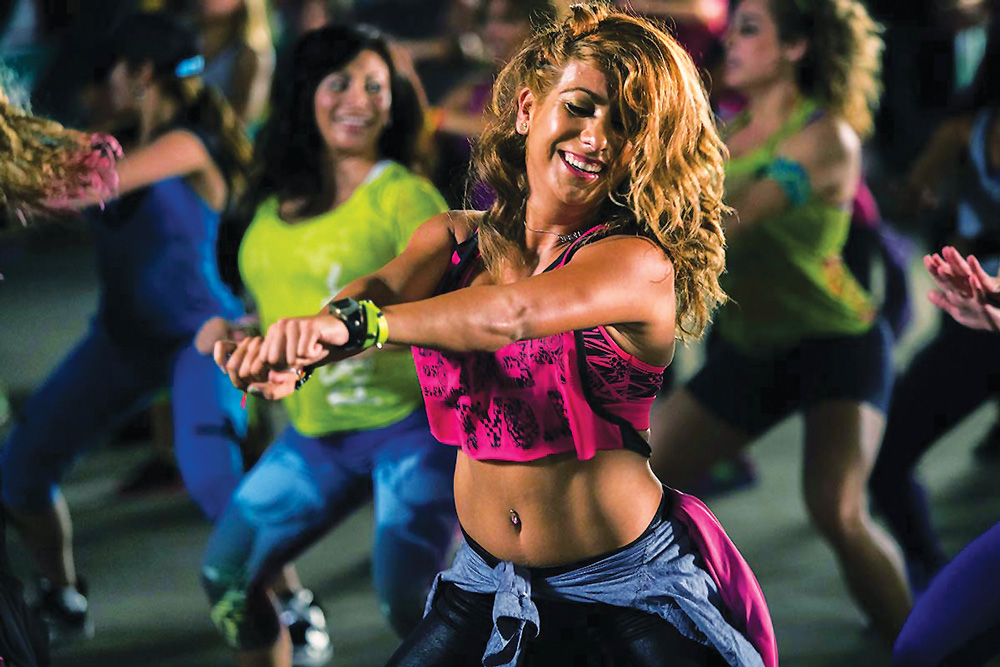 Whatever you want to do to make it sexy.
Whatever you want to do to make it sexy.
Henri:Okay. So, here we go. We're going to go back on the one, then forward, and now circle to the left. And forward to the right, back on the left, and circle to the right. So, it goes back, and forward, and circle. And back, and forward, and circle.
Ashlé:That's a friendly move. You can't be afraid of the person behind you on that one. So, if you're afraid of the contact then go for the facing forward. If not, then turn right around and try it that way.
Henri: Yeah. So, Whatever floats your boat, you will do.
Ashlé:We'll try it with music.
Henri:Dancing with the music. First, we're going to try it facing together. From the diagonal, you connect with your lady. And you connect. And we go, and one, two, three, up, and hip. Again. And forward, back, hip. Let's do it one more time. And one, two, hip.
Ashlé:You can also slow it down. And front, and all the way.
Henri:Yes.
Ashlé:And now, facing same direction.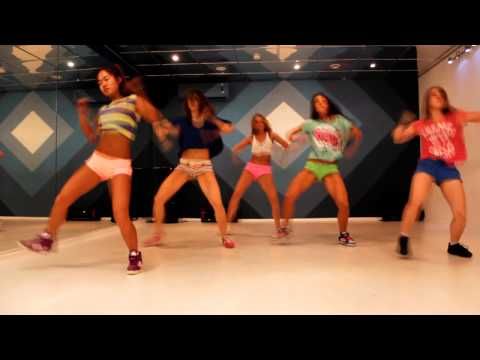
Henri:So, we go back, back, forward, and around. Back, forward, and around. To the right, and to the left. Now, we can slow it down, too. Hip, hip, other side and back, and forward, hip.
Ashlé:So, there you have the finishing series in our reggaeton section, that is partner work. You can take what we've given you and make a variety of things from that, but that's just what we chose to show you today.
Henri:Yes. I hope you enjoyed it, and keep watching the rest of our videos.
Can You Dance Salsa To Reggaeton Music? – Dancewear Tips
Dancing salsa to any music with the right beat and tempo is possible and very important when dancing socially. My first experience learning salsa dance was with reggaeton music. When I asked my salsa instructor why are we dancing to reggaeton music and not to traditional salsa music he told me that we can dance salsa to any music as long we can find the right beat.
Can you dance salsa to reggaeton music? Yes, you can dance salsa to reggaeton music.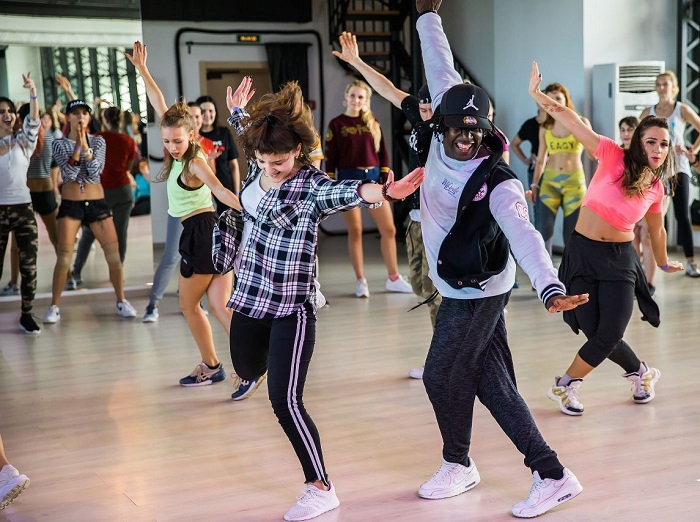 You can dance salsa to reggaeton music because reggaeton has eight beats in a bar and it has the right tempo. People mostly dance salsa to reggaeton music in salsa clubs. With nice body movements and the use of Latin beats, reggaeton can be a very nice addition to salsa dance besides traditional salsa music.
You can dance salsa to reggaeton music because reggaeton has eight beats in a bar and it has the right tempo. People mostly dance salsa to reggaeton music in salsa clubs. With nice body movements and the use of Latin beats, reggaeton can be a very nice addition to salsa dance besides traditional salsa music.
When dancing salsa to reggaeton you will be slowing it down and removing any sharpness you may have had when dancing to traditional salsa music.
Dancing salsa to reggaeton is slow, smooth, and requires more body movements into the dance.
What Is Reggaeton Music?
According to McGills, reggaeton is a form of dance music that became popular within Latin America at first and then slowly spread to Europe, North America, the United States, Asia, and Australia.
Fun Fact! Originally, Reggaeton gained popularity in Panama and then evolved to Puerto Rico.
Reggaeton is a mix of Latin music and hip hop, which is a nice addition to Latin dance styles such as bachata and salsa.
It is believed that the increased popularity of reggaeton will surplus traditional Latin music styles such as salsa music or merengue.
Reggaeton is based on strong body movements and is famous for exquisite body isolation and a combination of various moves.
People either love or hate reggaeton; there is no in-between. No matter on which side of the fence you are, you cannot deny that you can resist the catchy reggaeton beats.
Reggeaton has become so popular today that it seems there is a new hit every single day.
Reggaeton has appeared in the eighties and has evolved in 2000 thanks to the artists such as Maluma, Ozuna, Don Omar, Daddy Yankee, and many others.
Even if you are not a fan of reggaeton, you have likely danced to this type of songs on parties.
Can You Dance Salsa To Any Music?
When you are dancing salsa socially, you can dance salsa sequences to any 8 beats music and that has the right tempo and energy. Salsa is danced to two measures of four beats each making a total of eight beats.
- Traditional Salsa Music
Traditional salsa music has lyrics in Spanish only. Salsa music is based on a 4/4 time signature and is mostly phrased in groups of eight beats or two bars. Salsa music may sound busy sometimes. It means that there are lots of instruments are playing at the same time.
This is why many people who just want to learn to dance salsa socially prefer modern and commonly played music such as reggaeton at social events.
- Slow Romantic Salsa Music
Romantic salsa music tends to be less moving, especially for people who like to dance to a fast beat.
What Kind Of Songs You Should Listen To When Practicing Salsa?
People who are interested in learning salsa dance need to recognize the importance of consistent listening and practicing to music to learn salsa rhythm and find the right beat.
Pay attention to the following in the songs:
- Songs that are not too busy.
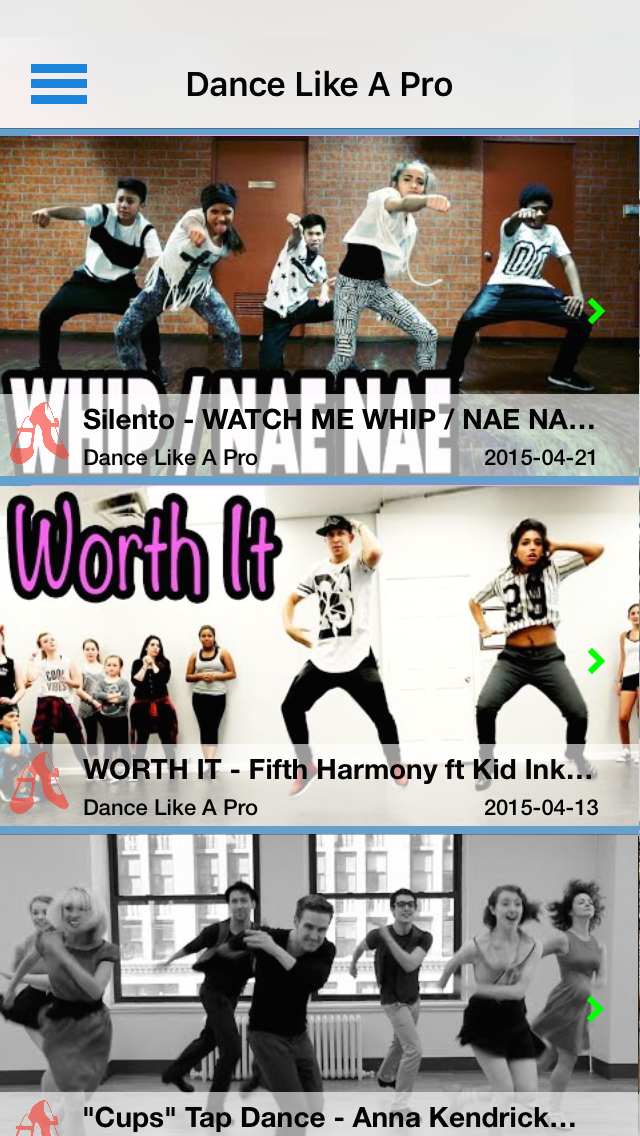 Many traditional salsa songs sound too busy. This means that there are lots of instruments playing at the same time and overlapping with each other. Some songs may sound faster than they are. In reality, they are not, but the tempo may be deceiving due to the multiple layers of rhythms playing together.
Many traditional salsa songs sound too busy. This means that there are lots of instruments playing at the same time and overlapping with each other. Some songs may sound faster than they are. In reality, they are not, but the tempo may be deceiving due to the multiple layers of rhythms playing together. - Songs that are not too fast. Some songs are very fast, so I would advise anyone just starting learning salsa to avoid these songs. Fast songs make it difficult to focus on the music while you are trying to focus on the steps.
- Songs that have clear instruments. It is important to choose songs that have clear and easy to hear instruments. This will allow you to match the steps easier.
- Songs that are regularly played on salsa social events. This is why it is important to know how to dance salsa to any song. When you go to a social event you cannot pick and choose songs. So, find the most popular songs that will set you up for success towards becoming a confident salsa dancer.
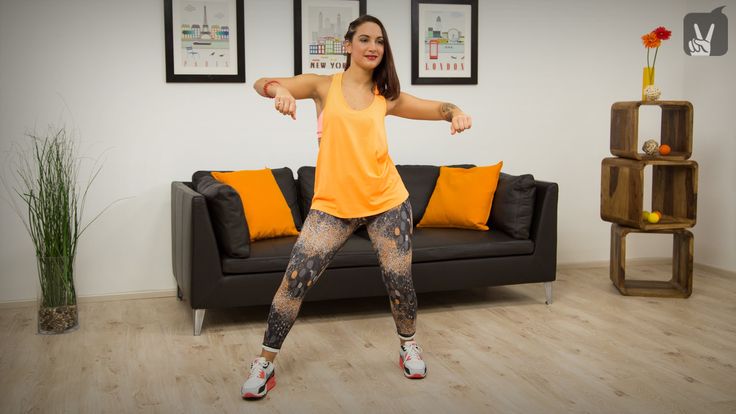
There are many benefits of dancing salsa to any music, including reggaeton. Once you know how to recognize and find the right beat, you will be able to dance to (almost) any song. This is important if you are in social settings and you cannot choose a song you like.
My first experience going out to a club for salsa social dancing was with reggaeton music. Although, for the first hour or two they played salsa music. As the night progressed, the music got switched to reggaeton.
I have felt the higher energy in the room instantly. It seemed that people were waiting for the reggaeton music to let it all out. I saw some amazing salsa dancers on the floor. Reggaeton music didn’t discourage them from dancing, but rather it fueled them to dance even better.
I know that for most professional salsa dancers, dancing to reggaeton is not acceptable but for people, like myself, who just want to dance salsa socially and have fun to the music we love, reggaeton is an excellent choice.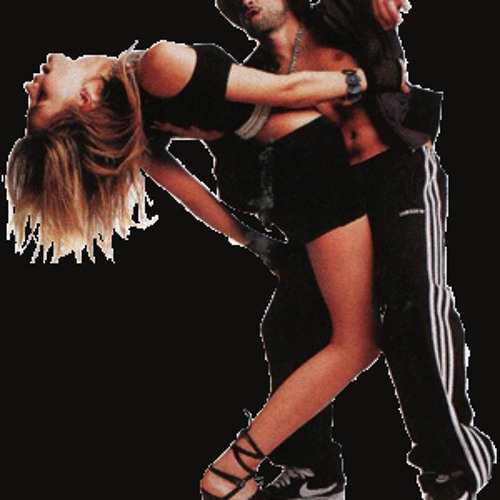
Final Words
I know that many salsa lovers will not agree with me but salsa dancing is all about having fun and dancing to music you love. Being free to dance salsa to any music, even reggaeton, will be beneficial to you, especially if you are dancing salsa socially. So have fun, find that beat, and dance!
Reggaeton dance: the best movements for women's health (PHOTO)
Reggaeton dance (also known as perreo) got its name from the musical style of the same name, under which it is, in general, performed. This direction appeared in the early 90s in Latin America under the influence of reggae, dancehall and hip-hop, among the youth of poor neighborhoods (far from puritanical views). Perhaps that is why reggaeton movements are so distinguished by rhythm, passion and freedom that the government of Puerto Rico at one time even tried to ban this dance (and musical direction) at the state level. Fortunately, reggaeton was not destined to stay forever in the Latin Quarters, in a few years it seeped into European and American culture, captured dance floors and music ratings.
The main role in the reggaeton dance is given to the lower part of the body, which the "artists" vigorously shake in all possible directions. It is this circumstance that makes it useful for women's health, both physical and psychological. “Already after the first reggaeton lessons, you will begin to feel your body better and be able to overcome muscle clamps,” says Olga Naumenko , a reggaeton teacher at the Vozdukh studio and the author of the complex that we will show today. “Plus, the energetic rotations and shaking that make up this dance improve blood circulation in the pelvic organs, relieve congestion, and normalize the hormonal system.”
Reggaeton classes will also be useful for those who care about their figure. “Dance implies a good aerobic load and works out the muscles of the hips, buttocks, back and shoulder girdle,” says Olga Naumenko.
Contrary to popular belief, everyone can dance reggaeton, not just women with luxurious forms. “The voluminous fifth point, of course, visually makes the dance movements more spectacular. But the lack of volume in this area is by no means an obstacle to studies. You can master the correct technique with buttocks of any shape and size, says Olga Naumenko. - The base in all shaking is the movement of the coccyx forward. To master it, imagine that at first you seem to raise your tail (like a dog), and then lower it down, slightly pushing the pelvis forward.
By the way, there is also double reggaeton - so, having mastered the technique of movements on your own, you can dance it with a partner.
How to build a session
* Begin the lesson with a short warm-up: bends, squats and lunges.
* Master all movements sequentially at a slow pace. Later, you can gradually increase the speed of execution and combine movements in any order, creating your own dance sequences.
* End with stretching.
* Exercise 3-4 times a week.
First exercise: basic shaking
Stand straight, feet slightly wider than shoulders. Put your hands on your hips. With an exhalation, soften your knees and bend strongly in the lower back, pulling your pelvis as far back as possible, stretch your tailbone slightly back and up (as if raising your tail). As you inhale, push your pelvis slightly forward and twist it (as in Pilates). The loin should become flat. Then bend your knees a little more and, lifting your heels off the floor, bend at the waist again and point your tailbone up, slide your palms over your hips a little lower. Repeat the movement twice more, bending your knees even more and gradually squatting lower. At the end point, you should be almost squatting with your hands on your knees. Slowly return to the starting position and perform 3 repetitions exercises from the beginning.
Second exercise
Sit on the floor, bend your legs and place your shins on the sides of your thighs. Spread your knees slightly wider than your shoulders, rest your palms on the floor in front of you. Transfer the weight of the body to the hands, while inhaling, lift the pelvis off the floor and bend strongly in the lower back, while at the same time directing the tailbone slightly back and up. As you exhale, lower it down, making the lower back flat. Shift your body weight into your hips, imagining the weight of your pelvis pulling it towards the floor. Return to starting position and repeat the movement for 9 more0005 4-5 times .
Third exercise
Take the starting position of the previous exercise. Then transfer 50% of the body weight to the palms, evenly distribute the same amount between the thighs. The pelvis is raised above the floor, the coccyx is directed back and up. Keeping a slight arch in the lower back, tilt the pelvis slightly to the left (transferring body weight to the left thigh), then to the right. Return to the starting position and perform 4-5 such movements in each direction.
[new-page]
Fourth exercise
Get on all fours, then straighten your legs a little, pointing your pelvis up. While inhaling, rest your palms and socks on the floor, make your lower back flat. As you exhale, bend at the waist, point the tailbone up, straighten your knees a little more. On an inhale, return to the starting position. Perform 5-6 repetitions of exercises.
Fifth exercise
Sit on your haunches, put your feet together, lift your heels off the floor. Spread your knees out to the sides and place your palms on them. With an exhalation, bend at the waist, point the tailbone back and up and slightly straighten the knees. From this position, step with your left foot to the side and point the tailbone slightly forward, getting rid of the deflection in the lower back. Then bend back and point your tailbone back and up. Repeat the coccyx movement for 9 more0005 2-3 times and return to the starting position. Perform another 2 repetitions of exercises.
Sixth exercise
Stand up straight, feet slightly wider than shoulder width. Soften your knees, bend in the lower back, slightly bent arms spread slightly to the sides (palms clenched into fists and pointing down). As you exhale, take a step back and slightly to the left with your left foot, at the same time flatten your lower back and round the spine in your upper back (as if you were slouching). On an inhale, bend at the waist (pull your chest forward), point your tailbone back and up, and move your hands slightly back behind your pelvis. Repeat the cycle of movements, stepping back and slightly to the right with your right foot. Complete 4-5 such steps from each leg.
Seventh exercise
Take the starting position of the previous exercise. As you exhale, push your pelvis to the left (point the coccyx up and slightly back), then make it a rotational movement to the right. On an inhale, return to the starting position. Perform 5-7 repetitions of exercises in each direction.
By exercising regularly, you can strengthen the muscles of the lower body, improve blood circulation in the pelvic organs, become sexier and more self-confident.
Would you like to practice dancing at home?
Train online with our top trainers.
Reggaeton | Ritmo Dance - Dance school for adults and children To do dancing:
- your body has acquired a cat's grace and plasticity;
- you have become much more self-confident and liberated;
- at any party, in a club and at a disco, they were in the center of attention;
- you enjoyed every lesson;
- to have an excellent figure and constantly keep the body in good shape?
If you answered YES to at least one question, then Reggaeton is for you.
You can treat it differently. You can be a little wary because of overt sexuality and excessive frankness. Other people cannot live without this incendiary dance! But we can definitely say that it is impossible to treat him indifferently.
Why does Reggaeton get such opposite responses?
Reggaeton dance is a hallmark of Latin America, in particular Puerto Rico. As soon as it is not called: both raggaeton, and reggaeton, and, perhaps, the most common variant - reggaeton. There is no mistake here, as there are several ways of writing: in English - reggaeton, in Spanish - regueton or reggaeton.
This dance direction originated primarily under the influence of reggae, dancehall and rap. Dance connects with hip-hop a certain protest, audacity and courage, the desire for liberation, expressed in movements. But, although reggaeton is similar in places to hip-hop, its rhythm is significantly different from the latter, it is difficult not to feel Latin American roots in it, so it harmoniously and easily overlaps with the rhythms of salsa, bachata, merengue and other similar trends.
- Reggaeton is a groovy rhythm, unbridled drive and a wonderful mood, and in addition to this - a seductive toned body.
- Reggaeton is real hot and sexy dirty dancing. This is the choice of those for whom it is important to be completely liberated in the dance, to become even brighter and more attractive.
The main movements characteristic of reggaeton are all kinds of shaking, rotation of the hips, chest, booty. This action looks ... mmm ... very sexy and bewitching. Not a single man can remain indifferent to such seductive movements!) And reggaeton is even brighter when performed by the stronger sex!
There are several types of dance. You can perform it both solo - there is latin, and elements of hip-hop, dancehall, strip plastics, and together with a partner - these are interesting turns, supports, the ability to instantly feel a partner! Another variety - perreo - the most discussed, hot and frank "doggy style". The main thing in it is the maximum free movement, corresponding to the tempo of the music and the rigid style of the dance. The whole body moves freely through skill, imagination and emotion. Forget about the rules and any restrictions. Only music, rhythm, passion and boundless movement!
Reggaeton is danced at any age. In the classroom, teachers pay a lot of attention to plasticity, flexibility, stretching. The main thing in dance is to feel the rhythm (which you will definitely be taught already in the first lessons). Even if you have never had to dance before, in just a few classes at our studio school, you will be able to surprise all your friends with this daring dance!
Separately, it should be noted that regular practice of this dance brings great benefits to a person’s well-being and positively affects his form:
- Modeling the ideal figure. With each lesson, you will get an increasingly feminine figure, without extra centimeters and kilograms.
Numerous "shaking" of the sirloin parts of the body will be the best assistant in the fight for the beauty of your buttocks and thighs, you will get elastic and smooth skin without a hint of cellulite.
- General physical activity. Even though it is not necessary to do leg presses or lift barbells, however, in reggaeton classes, all muscle groups are involved in a grandiose work.
- Breathing exercises. In reggaeton, any movement is aerobic (associated with breathing), which makes it easy to saturate the blood and internal organs with oxygen. Such gymnastics brings tangible benefits, both to the whole organism as a whole, and to the respiratory organs in particular.
- Strengthening of the back muscles, plasticity and flexibility, joint mobility. Strengthening the muscles of the lumbar and back will be an obligatory result of training due to the fact that all parts of the spine are involved in the dance.
The gait becomes easier, and the posture is nobler.
- Increased libido. This statement can be easily explained, because, as we all know: “a healthy mind in a healthy body”. Surely psychologists would have found other explanations for this phenomenon, but the fact remains.
- Women's health. Frequent shaking of the hips, rotation of the pelvis, the work of many other muscles of the body ... is a unique massage to maintain the health of the internal organs of the abdomen. By moving in the dance, you increase blood circulation, which has a particularly beneficial effect on the female body in general and on the pelvic organs in particular. Slags leave the body, and, as a result, inflammatory processes in the appendages pass, and even, no matter how incredible it may sound, cysts cease to form, fibroids resolve. And after six months or a year of dancing, women are no longer bothered by menstrual pain, because of which they had to sit on painkillers before.
Learn more

